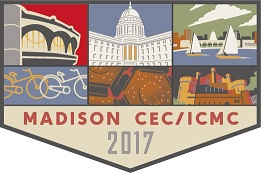Speaker
Description
The record Jc of Nb3Sn conductors has plateaued since the early 2000s; however, new target has been put forward for the planned future circular colliders. This presentation aims to discuss prospects for further improvement of Nb3Sn conductors. The factors determining the non-Cu Jc are summarized, which include current-carrying Nb3Sn fraction in subelements, Nb3Sn Bc2, and pinning capacity; then prospects to improve each factor are analyzed respectively. A model is introduced for phase fractions in subelements; the limit of current-carrying Nb3Sn fraction in subelements is obtained based on this model. A model is also proposed to explore what determines Nb3Sn phase stoichiometry during diffusion reaction. It is seen that among all the possible means, the only opportunity for significantly improving non-Cu Jc relative to the present record values lies in improving pinning. To improve pinning, a comprehensive review of an internal oxidation technique is given in this talk, including its opportunities, challenges, and its applications in major types of Nb3Sn wires (PIT, RRP, and single-barrier wires). Recent progress in optimizing this method for further improving the performance of Nb3Sn conductors is also reported.
